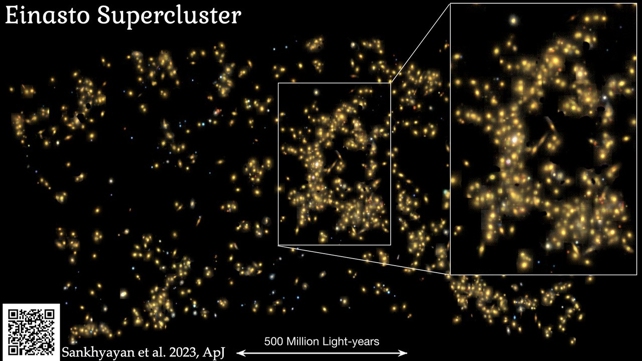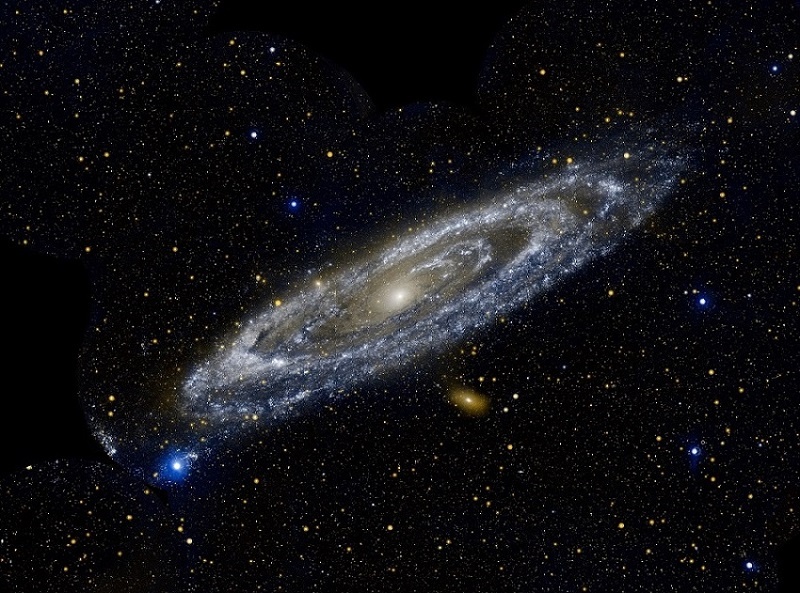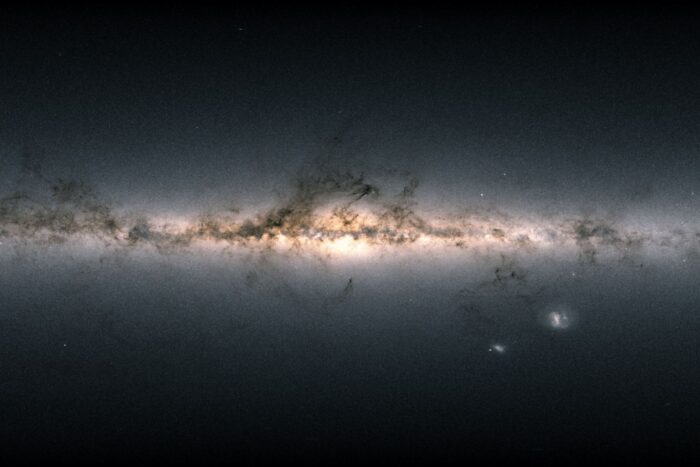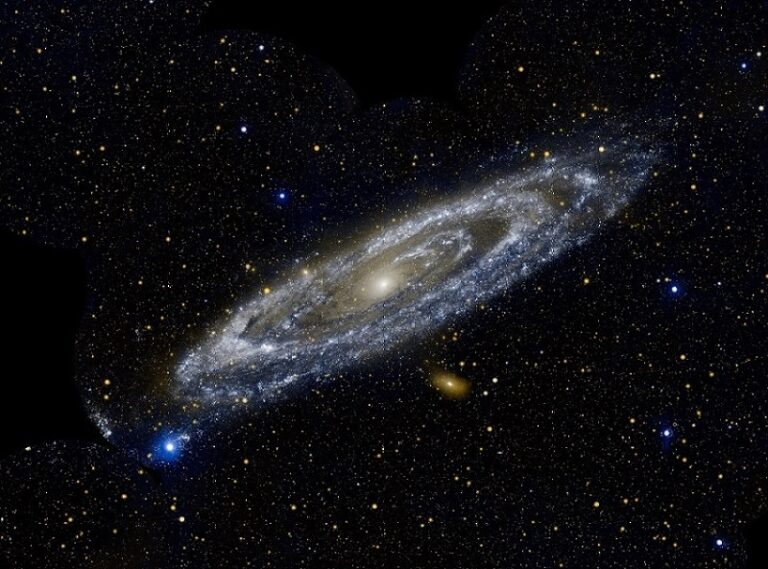Astronomers have made a groundbreaking discovery by identifying the largest supercluster ever observed in the cosmos.
The Earth’s position in the vast expanse of space is quite familiar to us, as it revolves around an average star known as the Sun. Interestingly, our Sun itself orbits the center of our galaxy, the Milky Way. However, beyond this point, our knowledge becomes less extensive.
The Milky Way is actually a part of a massive structure called the Laniakea Supercluster, which spans an astonishing distance of 250 million light years!
This supercluster encompasses an immense region of space and is home to no less than 100,000 galaxies. Nevertheless, there are even larger superclusters out there, such as the recently discovered Einasto Supercluster. This colossal supercluster stretches an incredible 360 million light years across and hosts a staggering 26 quadrillion stars!
During my public lectures, I always derive a peculiar satisfaction from informing the audience that galaxies, in fact, do not exist!

Continue to elaborate that, similar to a city being a compilation of various elements, superclusters are groupings of galaxies held together by gravitational forces. A supercluster essentially consists of galaxies, stars, nebulae, planets, comets, and other celestial bodies. Without these components, a supercluster would not be able to exist.
Superclusters, such as Laniakea and Einasto (located 3 billion light years away), are some of the largest structures found in the Universe.
The recent discovery of this supercluster has been dedicated to Professor Jaan Einasto, a trailblazer in the study of superclusters, who celebrated his 95th birthday on 23 February 2024.

When considering the visualization of the immense scale of these structures, envision an ordinary coin (the specific type of coin is not of great importance) placed on a football field. This coin symbolizes the vastness of the Milky Way Galaxy, while the length of the football field represents the boundaries of the supercluster. Additionally, you can picture the Sun as a golf ball and the combined mass of the supercluster as Mount Everest, emphasizing the magnitude of the comparison.

The Tartu Observatory, comprising a team of international astronomers, has made an announcement regarding their extensive survey of 662 superclusters. Their findings, published in the Astrophysical Journal, shed light on intriguing dynamics within these superclusters. Notably, they discovered that the galaxies within a supercluster are receding from each other at a slower rate compared to the overall expansion of the universe. This deceleration can be attributed to the gravitational force exerted by the supercluster, which acts as a restraining influence on the expansion. However, despite this effect, the galaxies will eventually drift apart given sufficient time, as the deceleration is not significant enough to halt their separation. Consequently, it is important to view superclusters as transient and ever-changing phenomena.
Furthermore, the astronomers uncovered a correlation between the density and size of a supercluster. This relationship follows an inverse square pattern, indicating that the density of a supercluster decreases as the square of its size decreases.
Do not forget to share your opinion with us to provide you with the best posts !




0 Comments